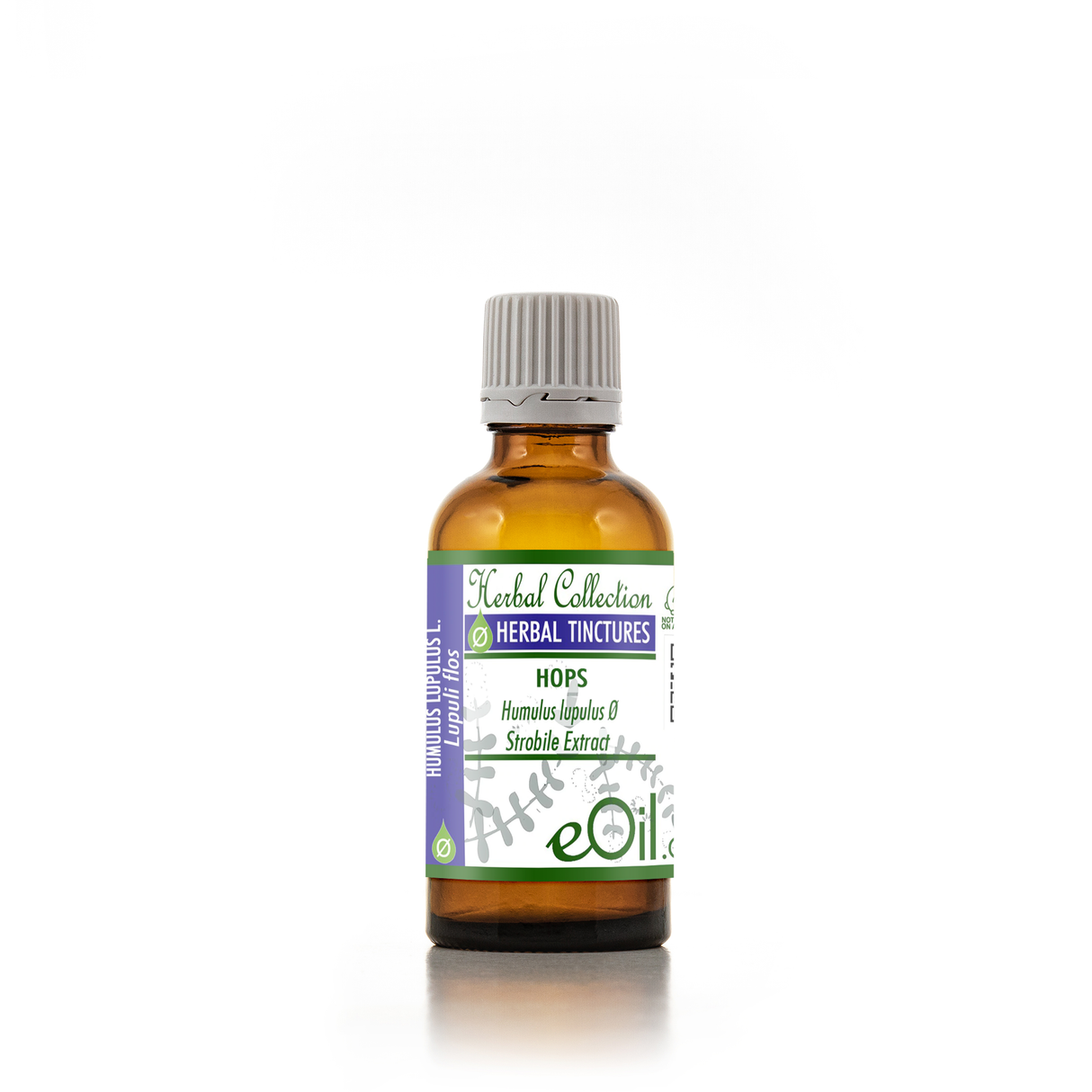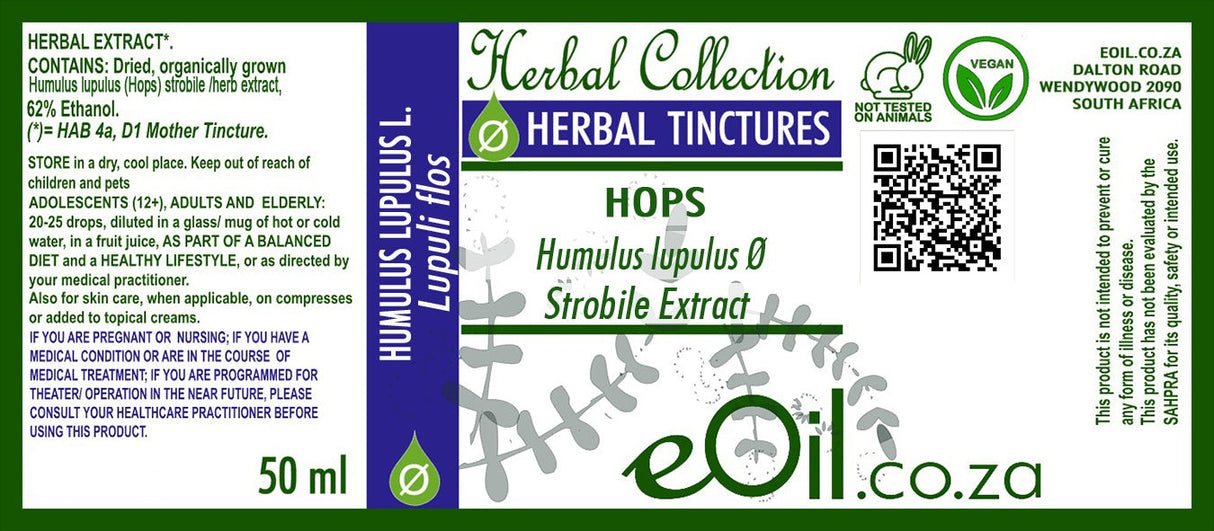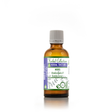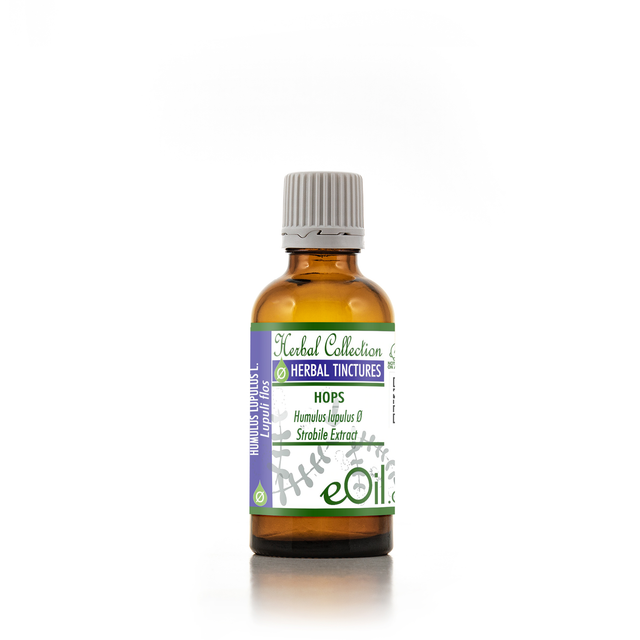Hops - Liquid Herbal Extract
Hops - Liquid Herbal Extract - 50 ML is backordered and will ship as soon as it is back in stock.
Description
Description
Understanding Mother Tinctures & Glycerines
Hops Liquid Herbal Extract tincture is crafted from Humulus lupulus flower cones, an herb traditionally valued for its natural bitters, flavonoids, and relaxing properties.
This alcohol-based tincture preserves key botanical compounds known for gently supporting relaxation, digestive wellness, and sleep quality.
Ethically sourced and vegan-friendly, it fits adult daily herbal routines.
TRADITIONALLY USED FOR
May help with
- sedative - analgesic
- antibacterial
- strong estrogenic
- effective against hot flushes
- menopausal discomfort
- nervous insomnia
- weight management
Hops (Humulus lupulus) is a versatile herb with various applications in herbal medicine, brewing, and aromatherapy.
The female flower cones, known as strobiles, are the primary part used for medicinal and culinary purposes. Here's a comprehensive overview of hops usage in different forms:
Hops Tincture
Hops tincture is a concentrated liquid extract made by soaking dried hops strobiles in alcohol. This form is popular due to its long shelf life and ease of use.Usage:
Insomnia: Take 1-2 ml before bedtime to promote relaxation and sleep
Anxiety: Use 1 ml up to 3 times daily to help reduce stress and anxiety
Digestive aid: Take 1 ml before meals to stimulate appetite and aid digestion
Preparation: Typically made in a 1:5 ratio with 60% alcohol. Dosage is usually 1.5-3 ml, taken up to 3 times daily
Herbal Capsules
Hops capsules offer a convenient way to consume the herb without its bitter taste.
Usage:
Menopausal symptoms: Take 100 mcg of standardized 8-prenylnaringenin daily to help reduce hot flashes
Sleep aid: Consume 400 mg of hops extract combined with valerian root 30 minutes before bedtime
Metabolic health: Some studies suggest hops may help with weight management and metabolic syndrome
Dried Herbs
Dried hops strobiles can be used in various ways, including teas, sachets, and topical applications.
Usage:
Tea: Steep 1-2 grams of dried hops in hot water for 30 minutes. Drink up to 3 times daily for relaxation and digestive support
Sleep pillow: Fill a small sachet with dried hops and place it inside your pillowcase to promote restful sleep
Topical application: Create a poultice or fomentation for skin irritations, muscle spasms, or lower back pain
Essential Oil
Hops essential oil is less common but can be used in aromatherapy and topical applications.
Usage:
Aromatherapy: Add a few drops to a diffuser to promote relaxation and reduce stress
Massage oil: Dilute in a carrier oil and use for muscle relaxation or to soothe skin irritations
Bathing: Add a few drops to bathwater for a relaxing, sleep-promoting soak
Additional Uses and Benefits
Antioxidant properties: Hops contain polyphenols that may help protect cells from oxidative stress
Antimicrobial effects: Some studies suggest hops may have antibacterial properties, potentially useful in natural preservatives or skincare
Hormonal balance: The phytoestrogens in hops may help alleviate some menopausal symptoms and support hormonal balance
Potential cancer-fighting properties: Some compounds in hops, like xanthohumol, are being studied for their potential anti-cancer effects, though more research is needed
Brewing: Beyond medicinal uses, hops are crucial in beer production, providing bitterness, flavor, and aroma
Culinary applications: Hops can be used to flavor foods and beverages beyond beer, such as teas, sodas, and even some savory dishes
Skin care: Hops extracts are sometimes used in cosmetics for their potential anti-inflammatory and antioxidant properties
When using hops in any form, it's important to consider potential interactions with medications, especially sedatives or hormonal treatments.
Pregnant women should avoid therapeutic doses of hops. As with any herbal remedy, it's advisable to consult with a healthcare professional before starting a new regimen, especially if you have existing health conditions or are taking medications.
INFORMATION
Source : http://www.wikiphyto.org/wiki/Houblon
Reference on http://www.wikiphyto.org
Translation in English by Google Translate (go to the page of the source linked | on Chrome cellphones go on the 3 dots on the top right and select translate in your preferred language | on laptop right click your mouse and select option translate when hoovering on the page
plant name
Hop, hop (English)
International Latin denomination
botanical family
Cannabaceae
Description and habitat
- Perennial dioecious lianoid herbaceous plant, with opposite lobed leaves, ovoid yellow-greenish female flowers grouped in clusters, formed of membranous scales (bracts and bracteoles) which bear lupulin (oleoresin) glands in red-orange grains
History and tradition
- Cultivated for the production of beer from the 8th century in Germany
- Produced by hop fields in many countries with a temperate climate (Alsace, temperate Europe)
Parts used
- Dried female inflorescence (called “cone” or strobile)
Dosage forms available
- Mother tincture of female inflorescence (cone)
- Female inflorescence EPS (cone)
Usual dosages
Composition
Main components of the plant
- Flavonoids :
- Essential oil (0.3 to 1%): beta-myrcene , humulene (= alpha-caryophyllene ), caryophyllene
- Oleo-resins or prenylated derivatives of a 1-acyl- phloroglucinol : lupulone , humulone (15 to 30%) responsible for the bitterness
Main components of buds or young shoots
Main components of essential oil
- Monoterpene : beta-myrcene (acyclic, 3) 50%
- Sesquiterpenes : beta-caryophyllene , alpha-cadinene
- Humulene (= alpha-caryophyllene )
Properties
Plant properties
- Sedative, antibacterial activity
- Analgesic, effect mediated by opioid receptors, but not by serotonergic or alpha(2)-adrenergic receptors [1]
- Powerfully estrogenic [2] by various polyphenols : isoflavones , chalcones (including xanthohumol ), prenylated flavones including especially 8-prenyl-naringenin (= hopein ): at a dose of 30mg/Kg body weight in rats for 14 days, l enlargement of the uterus is the same as that obtained with 0.01mg/Kg of estradiol (3000 times lower activity in molecular weight ratio) [3] , [4]
- The activity is identical at the level of the alpha and beta estrogen receptors [5]
- Isoxanthohumol , weakly phytoestrogenic can be bioactivated by 8-prenyl-naringenin [6] , [7] , with intervention of the saprophytic flora (microbiota) [8]
- 8- prenyl -naringenin inhibits angiogenesis in vitro and in vivo [9]
- Effective on hot flushes with 8-prenyl-naringenin at a dose of 400 µg/kg [10] , and on menopausal discomfort [11] , [12]
Bud properties
Properties of essential oil
Directions
Indications of the whole plant (phytotherapy)
- Disorders of the menopause, hot flashes, hops would decrease the body temperature [13]
- Instability, hyperexcitability, insomnia of nervous origin and states of stress
- Sleep onset insomnia during menopause
- Symptomatic treatment of neurotonic states in adults and children, especially in cases of minor sleep disorders
- appetite stimulation
- female hirsutism (?)
Indications of the bud (gemmotherapy)
Specific indications of essential oil (aromatherapy)
Known or suspected mode of action
- Methylbutenol formed from humulone and lupulone can be considered as one of the active ingredients, its content increases during storage
- Hopein (= 8- prenyl -naringenin ) is potently estrogenic, and at a dose of 30 mg/Kg of body weight in rats for 14 days, the increase in the uterus is the same as that obtained with 0.01 mg/ Kg of estradiol (source AFSSAPS)
Usual formulations
- Classic galactogenic herbal tea formula:
- Angelica Angelica archangelica seeds...30 grams
- Green anise Pimpinella anisum seeds...30 grams
- Fennel Foeniculum vulgare seeds ... 30 grams
- Caraway Carum caraway seeds...60 grams
- Hops Humulus lupulus cones ... 20 grams
- One teaspoon per cup. Boil 2 to 3 minutes, infuse 10 minutes. Drink 2 to 3 cups a day
Regulations
- French Pharmacopoeia list A (female inflorescence called "hop cone")
Possible side effects and precautions for use
- Contraindicated in mastosis and history of breast cancer, hormone-dependent cancers
Bibliographic references
- Aller↑ Park SH, Sim YB, Kang YJ, Kim SS, Kim CH, Kim SJ, Seo JY, Lim SM, Suh HW. Hop extract produces antinociception by acting on opioid system in mice. Korean J Physiol Pharmacol. 2012 Jun;16(3):187-92. PMID 22802700
- Aller↑ Chadwick LR, Pauli GF, Farnsworth NR. The pharmacognosy of Humulus lupulus L. (hops) with an emphasis on estrogenic properties. Phytomedicine. 2006 Jan;13(1-2):119-31. PMID 16360942
- Aller↑ AFSSA, AFSSAPS. Safety and benefits of dietary phytoestrogens - Recommendations. March 2005 full text
- Aller↑ Milligan SR, Kalita JC, Pocock V, Van De Kauter V, Stevens JF, Deinzer ML, Rong H, De Keukeleire D. The endocrine activities of 8-prenylnaringenin and related hop (Humulus lupulus L.) flavonoids. J Clin Endocrinol Metab. 2000 Dec;85(12):4912-5. PMID 1113416
- Aller↑ S Milligan, J Kalita, V Pocock, A Heyerick, L De Cooman, H Rong, and D De Keukeleire. Estrogenic activity of the hop phyto-oestrogen, 8-prenylnaringenin. Breeding (2002) 123 235-242. PMID 11866690 full text
- Aller↑ Bolca S, Possemiers S, Maervoet V, Huybrechts I, Heyerick A, Vervarcke S, Depypere H, De Keukeleire D, Bracke M, De Henauw S, Verstraete W, Van De Wiele T. Microbial and dietary factors associated with the 8- prenylnaringenin producer phenotype: a dietary intervention trial with fifty healthy post-menopausal Caucasian women. British journal of nutrition. 2007, vol. 98, no.5, p. 950-959 [1]
- Aller↑ Cassia R. Overk, Ping Yao, Lucas R. Chadwick, Dejan Nikolic, Yongkai Sun, Muriel A. Cuendet, Yunfan Deng, AS Hedayat, Guido F. Pauli, Norman R. Farnsworth, Richard B. van Breemen, Judy L. Bolton. Comparison of the In Vitro Estrogenic Activities of Compounds from Hops (Humulus lupulus) and Red Clover (Trifolium pratense). J Agric Food Chem. 2005 August 10; 53(16): 6246–6253 [2]
- Aller↑ Sam Possemiers, Arne Heyerick, Veerle Robbens, Denis De Keukeleire, Willy Verstraete. Activation of Proestrogens from Hops (Humulus lupulus L.) by Intestinal Microbiota; Conversion of Isoxanthohumol into 8-Prenylnaringenin. Journal of Agricultural and Food Chemistry 2005 53 (16), 6281-6288 [3]
- Aller↑ Pepper Michael S, Hazel Susan J, Hümpel Michael, Schleuning Wolf-Dieter. 8-prenylnaringenin, a novel phytoestrogen, inhibits angiogenesis in vitro and in vivo. J.Cell. Physiol. 199: 98-107, 2004 [4]
- Aller↑ James Bowe, Xiao Feng Li, James Kinsey-Jones, Arne Heyerick1, Susan Brain2, Stuart Milligan and Kevin O'Byrne. The hop phytoestrogen, 8-prenylnaringenin, reverses the ovariectomy-induced rise in skin temperature in an animal model of menopausal hot flushes. Journal of Endocrinology (2006) 191, 399-405 [5]
- Aller↑ R. Erkkola, S. Vervarcke, S. Vansteelandt, P. Rompotti, D. De Keukeleire, A. Heyerick. A randomized, double-blind, placebo-controlled, cross-over pilot study on the use of a standardized hop extract to alleviate menopausal discomforts. Phytomedicine 17 (2010) 389–396 PMID 20167461
- Aller↑ Heyerick A, Vervarcke S, Depypere H, Bracke M, De Keukeleire D. A first prospective, randomized, double-blind, placebo-controlled study on the use of a standardized hop extract to alleviate menopausal discomforts. Maturitas. 2006 May 20;54(2):164-75. PMID 16321485
- Aller↑ Goetz P. The role of hops and its constituents in the treatment of menopause. Phytotherapy, April 2007, Volume 5, Issue 2, pp 83–85
CAUTION
Store in a cool, dry place, away from light. Keep tightly closed, away from the reach of Children and pets.
Do not exceed the daily dose.
This product is not intended to prevent or cure any form of illness or disease.
If you are pregnant or nursing ; If you have a medical condition or are in the course of medical treatment ; If you are programmed for theater/operation in the near future, please consult your healthcare practitioner before using this product.
This product cannot replace a varied and balanced diet and a healthy lifestyle.
This product has not been evaluated by the SAHPRA for its quality, safety or intended use.





